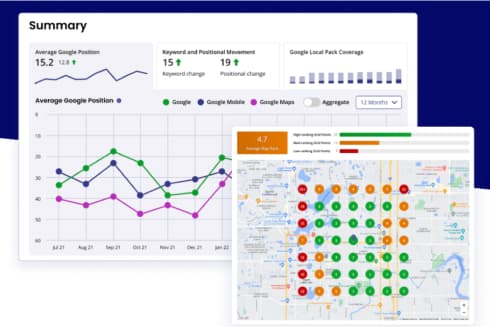What is the value proposition and why is it crucial for your company?
In today’s competitive business world, a well-defined value proposition is essential for success. This proposition acts as a clear promise about the value a company offers to its customers and how it differentiates itself from the competition. In simple terms, it is the set of benefits that customers will gain by choosing your product or service over that of the competition.
An effective value proposition should not only address customer needs and problems, but it should also clearly communicate how the company offers unique and valuable solutions. To achieve this, the value proposition must be specific, relevant, and based on a deep understanding of the target market.
Furthermore, a strong value proposition can influence several key areas of the company. From product development and marketing strategy to sales and customer service, everything must be aligned with the value proposition to ensure a consistent and satisfying customer experience.
The value a company offers can be tangible, such as an innovative product with unique features, or intangible, such as exceptional service or an outstanding user experience. In either case, it should be clearly articulated in the company’s communication, from its website to its marketing and sales materials.
Understanding and developing an effective value proposition can make the difference between success and failure in a saturated market. It is a strategic tool that not only attracts customers, but also strengthens the relationship with them, promoting loyalty and sustained growth.
Definition of a Value Proposition and what are its characteristics
A value proposition is a core business concept that defines the set of benefits and advantages a company offers its customers compared to the competition. Essentially, it is a clear and compelling statement that summarizes the value the customer will receive by choosing a product or service over others available on the market. This proposition should not only capture the attention of potential customers, but also highlight how the company’s offering solves specific problems or meets needs in a unique way.
An effective value proposition is characterized by several key qualities. First, it must be clear and concise, avoiding jargon and communicating directly the benefits that the customer will gain. Second, it must be relevant, meaning it must address the specific needs and desires of the target market. To achieve this, it is essential to conduct thorough market research and deeply understand customers and their pain points.
In addition, the value proposition must be clearly differentiated from the competition’s offerings. This involves identifying and highlighting the unique features of the products or services that truly make the company stand out in the market. Whether through technological innovation, excellent customer service, or a competitive pricing proposition, differentiation is crucial to attracting and retaining customers.
Another important feature is that the value proposition must be credible and backed by reality. Promises must be aligned with what the company can actually deliver, as unmet expectations can damage reputation and customer trust. Finally, an effective value proposition must be consistent across all communications and customer touchpoints, from advertising to after-sales service, to ensure a coherent and positive customer experience.
Why Should the Value Proposition Be Customer-Centric?
The value proposition must be customer-centric because it is the starting point for building a meaningful and lasting relationship with them. In a saturated market, consumers have a wide variety of options and are continually evaluating which of them offers them the greatest benefit. Therefore, a customer-centric value proposition becomes a crucial element to capture and maintain their attention.
Customer focus allows the value proposition to align with the specific needs, wants, and problems of the target audience. This means that rather than focusing solely on the features of the product or service, the proposition should clearly demonstrate how these features meet customer expectations and solve customer problems. By thoroughly understanding customers and their motivations, a company can deliver a proposition that resonates with them more effectively.
A customer-centric value proposition also improves the relevance and resonance of the message. When customers feel that a company understands their needs and cares about offering solutions that truly benefit them, they are more likely to be attracted to the offering. This can translate into a higher conversion rate, increased customer loyalty, and a better reputation in the market.
Additionally, being customer-centric helps build an emotional connection with customers. Companies that manage to establish a genuine and meaningful connection often experience increased loyalty and a greater willingness to recommend their products or services to others. This connection is not only based on the quality of the product, but on the perception that the company values and understands its customers.
Ultimately, a customer-centric value proposition also facilitates adaptation and innovation. By maintaining a constant focus on changing customer needs and preferences, companies can adjust their offerings and strategies to stay relevant and competitive in an evolving environment. This not only ensures continued customer satisfaction but also drives company growth and evolution.
What Are the Pillars of a Value Proposition?
For a value proposition to be effective and truly impact the market, it must be based on several key pillars. These pillars help ensure that the proposition is clear, relevant and compelling. Below are the key pillars of a value proposition:
Clarity
Clarity is one of the most important pillars of a value proposition. A proposition should be easy to understand and free of technical jargon that can confuse potential customers. The idea is that the message is direct and understandable at first glance. A clear proposition communicates in a simple way what problem the product or service solves and how it benefits the customer. By removing ambiguities and simplifying the message, the value proposition becomes more accessible and effective.
Language
The language used in the value proposition should be specific and resonate with the target audience. This means employing a tone and vocabulary that aligns with customer expectations and preferences. Using appropriate language not only helps to capture the customer’s attention, but also establishes a deeper and more authentic connection. Well-chosen language can make the proposition feel more personalized and relevant, thus making it easier for the customer to identify with the offering.
Transparency
Transparency is crucial to building trust and credibility. The value proposition should be honest about what the product or service can offer and not promise benefits that cannot be delivered. By being transparent, a company shows integrity and strengthens customer trust in the brand. Realistic promises and acknowledging the limitations of the product or service help manage expectations and avoid future disappointments.
Address
An effective value proposition should provide clear direction on how the customer can benefit from the offering. This includes not only describing the benefits, but also a precise indication of the steps the customer must take to obtain those benefits. The proposition should logically and easily guide the customer from the point of interest to the desired action, such as making a purchase or subscribing to a service. Clear direction helps facilitate the customer’s decision-making process and drive conversion.
How to Make an Impeccable Value Proposition?
Creating a flawless value proposition requires attention to key details that ensure your message is effective and engaging for your audience. Below are the essential elements for building a value proposition that captures attention and drives results:
Qualification
The title is the first point of contact with your audience and should immediately capture their interest. A good title should be concise and clearly reflect the core value you offer. Use persuasive and direct language that resonates with the needs and wants of your target audience. The title should communicate the main benefit of your product or service in a way that attracts attention and motivates the reader to explore further.
Caption
The subheadline complements the headline by providing more context or additional details about the value proposition. It should expand on the idea in the headline, offering a more specific look at how your product or service addresses customer needs. Use the subheadline to highlight unique features or additional benefits that can differentiate your offering from the competition. Make sure the subheadline is clear and relevant, helping to guide the reader toward a full understanding of your proposition.
Bullet Points
Bullet points are an effective tool for presenting information in a clear and organized manner. Use bullet points to break down the key benefits and key features of your offering. Each point should highlight a specific aspect of how your product or service solves problems or meets needs. Bullet points make for easy, quick reading and allow potential customers to quickly identify the most important aspects of your value proposition.
Images
Images can significantly improve the effectiveness of your value proposition by providing a visual representation of the benefit you offer. Use high-quality images that are relevant to your product or service and help illustrate how your value proposition is applied in practice. Images can be photographs, charts, or infographics that complement the text and reinforce the message visually. Make sure the images are professional and aligned with your brand identity.
Bonus
Including an additional bonus or incentive can make your value proposition even more attractive. Offering something extra, such as a discount, a free trial, or an additional resource, can provide additional value that motivates potential customers to take action. This bonus should be relevant to your offer and should reinforce the value you are already providing. Make sure the bonus is perceived as valuable and is clearly highlighted in your proposition to capture customers’ attention.
What Examples of Value Proposition Exist?
Understanding how value propositions manifest in the real world can provide valuable insight into how to structure yours. Below are several examples that illustrate different approaches and effective strategies for a value proposition.
Examples of Value Proposition in Products
- Apple: “Innovation in Every Product”
- Apple focuses on innovation and elegant design in each of its products. Its value proposition highlights the integration of advanced technology with an intuitive and aesthetically appealing design. Products like the iPhone and MacBook are presented as tools that not only meet technological expectations but also offer an exceptional user experience.
- Dyson: “Advanced Technology for the Home”
- Dyson promotes its products, such as vacuum cleaners and hair dryers, as cutting-edge technological solutions that improve efficiency and performance in the home. Its value proposition focuses on technical innovation, superior quality and functional design, providing customers with a superior user experience.
Examples of Value Proposition in Services
- Netflix: “Entertainment without limits”
- Netflix’s value proposition is based on offering unlimited access to a wide variety of entertainment content through a streaming platform. The value lies in the convenience of watching a large number of movies and series anytime, anywhere, without ads and with personalized recommendations.
- Amazon Prime: “Exclusive Benefits for Members”
- Amazon Prime offers a value proposition that combines multiple benefits, such as free two-day shipping, access to video and music streaming services, and exclusive discounts. This comprehensive offering provides members with a great deal of value for their subscription, making it attractive to those seeking convenience and savings.
Examples of Value Proposition in Experiences
- Airbnb: “Unique Local Experiences”
- Airbnb sets itself apart by offering unique and authentic experiences in places around the world. Its value proposition focuses on allowing travelers to experience a city or region from a local and personal perspective, through activities and stays not found in traditional accommodation offerings.
- Starbucks: “A Comfortable Third Place”
- Starbucks promotes its stores as a “third place” between home and work, offering a comfortable and welcoming environment to socialize or work. The value proposition is to provide a pleasant experience at every visit, with a focus on customer service and the quality of its products.
Examples of Value Proposition in Pricing
- Walmart: “Everyday Low Prices”
- Walmart offers a value proposition centered on low, affordable prices on a wide range of products. The company’s strategy is to provide an affordable and convenient shopping experience, making it an attractive option for those looking for savings on their daily purchases.
- Dollar Shave Club: “Quality Shave at a Low Cost”
- Dollar Shave Club stands out for offering high-quality shaving products at affordable prices through a subscription model. Its value proposition is based on providing a convenient and affordable shaving experience, eliminating the need to purchase expensive products in stores.
The Key to Business Success
In today’s competitive business environment, a strong value proposition is essential to stand out and capture the market’s attention. This foundational element clearly defines the benefits a company offers and how it differentiates itself from the competition, ensuring it resonates with customer needs and desires.
By focusing on clarity, appropriate language, transparency, and precise direction, companies can build value propositions that not only attract new customers, but also strengthen loyalty and promote sustained growth. Ultimately, a well-crafted value proposition is the key to establishing a meaningful connection with the audience and achieving success in a dynamic and challenging market.












